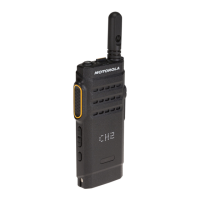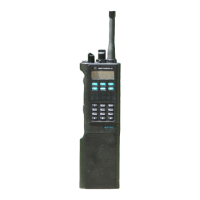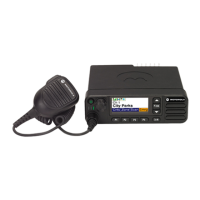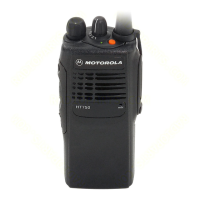During network reconfiguration, a significant number of radios registered on one cell may roam. This
roaming can cause major congestion on specific cells. To avoid the congestion on control channels for
the specific cells, the specified radios roaming should be distributed in time.
As the operation cannot be performed immediately for all the radios, some of the radios must wait
longer to roam. The time cannot be programmed not to cause any of the radios to have inferior
roaming capabilities. Thus the roaming time for the radios is randomized.
The randomization means that after roaming scenario starts, a radio is not sending registration
parameters to other cells at once but waits random time before sending registration PDUs to other
cells. Link failures and other related scenarios are not randomized not to cause any unwanted delays
in restoring the link.
2.14.5
Seamless Handover
Seamless handover eliminates voice interruption during calls by enabling the radio to roam faster
between cells while transmitting.
Faster roaming is possible because the radio asks its serving cell to perform the reselection and the
SwMI performs all the roaming signaling. The radio then moves straight to the traffic channel on the
new cell and continues the call without call restoration.
2.14.6
Congested Cell Handling
This feature is used only during initial registration and when roaming between sites. It is not used when
camped on a site that has become busy or congested due to no free traffic channel to make or receive
calls.
When the cell that the terminal is trying to register is congested, a special level-based algorithm is in
the place. Depending on the level of congestion, the terminal is waiting for the registration or is rejected
on that cell.
The terminal recognizes whether the cell is congested (Control Channel Congestion). The terminal
tries to roam to not congested cells first, ranking congested ones as secondary. The cell congestion is
one of the service level criteria.
The following cells are never marked as congested.
• Last suitable cell - if there are no other suitable cells during roaming or initial cell selection.
• Serving cell.
The feature is configurable using the Customer Programming Software (CPS).
2.14.7
Subscriber Class
When the radio powers up, or whenever it performs registration or roaming, it always uses its
provisioned Subscriber Class (SC).
When the radio registers on a cell that does not support any of its SCs, it is active only in services that
have the emergency priority.
Whenever the radio SC does not match the cell SC (the feature is configurable using the CPS), it either
uses normal ranking procedures (see Call Roaming on page 41), or does not roam to the cell at all.
2.14.8
Subscriber Class by Talkgroup
Subscriber Class by Talkgroup is a paid feature.
MN002955A01-AA
Chapter 2: Services and Features
42 Send Feedback
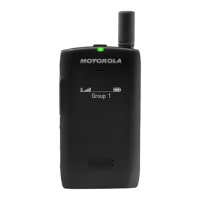
